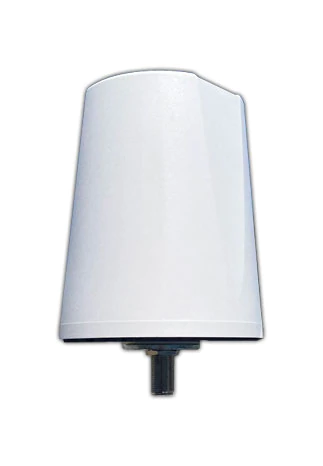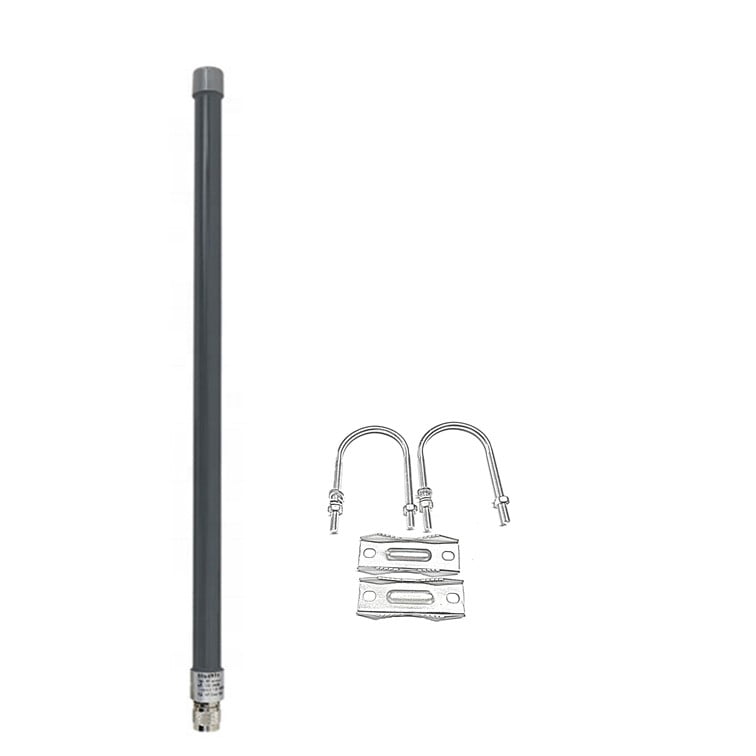Helium Miner Antenna Kits
Helium mining is becoming more and more popular. Here at RFShop we aim to help you with getting the best gear for your Helium hotspot. There is unfortunately a lot of misinformation out there about which antennas or cables to use, their gains, losses etc. With our 20+ years of antenna and electronics engineering experience, we can set the record straight.
Our kits include HNTenna, McGill and our own RFShop antennas paired with brackets, quality coaxial cable, and lightning protectors. All you would need is to get a miner from your preferred producer and get started with Helium mining.

Helium Miner Antenna Kits
RFShop antenna kit
Do you want to create a reliable hotspot within your budget? This basic kit is the solution for your Helium mining needs.
This is an antenna upgrade kit for Helium Miners or other IoT solutions running in the 915MHz or 928MHz frequency ranges. Kit contains options for budget friendly alternative to LMR400 as well as genuine LMR400 coaxial cable and lightning protector upgrades.
Choose either the 6 or 9 dBi RFShop antenna, they both come with brackets, select either the genuine LMR400 or equivalent coaxial cable. The connectors depend on your miner. Heltec, Linxdot, NEBRA, Bobcat and Sensecap miners use RP SMA (M), the Milesight miners use N(M). The antenna itself has an N (M) connector.

HNTenna kit
The MP Antennas HNtenna (P/N ANT-NH900-OUT-WHITE) is an outdoor antenna specifically designed for IoT networks in challenging environments. Utilizing multi polarized technology which includes integrated spatial and polar diversity that allows IoT devices to achieve connectivity where other antenna solutions underperform and often fail.
Applications

Helium Cable
Very basic summary: low loss, good quality will give you the maximum range. You lose very little of your signal in the cable from your modem, your router, or your miner to your antenna. What happens, if you have bad quality cable: you just don’t get the reach. This is probably the worst outcome there is because even if you had a low gain antenna, at least you had better coverage. Now you may have a high gain antenna which is still just this slight elevation, a bad cable will reduce your hotspot reach significantly. We always say the antenna is really important but the cable is as important – if not almost more important – because you can mess it all up with a bad cable.
We have ready-to-go cable assemblies for miners such as Sensecap, Bobcat, Nebra, Rak, Heltec, Linxdot and Milesight

Best Helium Cables
The easy one to use in short lengths is RG316 or pink colored cable. It’s really thin, it’s very flexible – it’s the lossiest as well: about a dBi per meter at one gigahertz. For every meter of that cable, you will lose one dBi and it will lose 1 dBi of gain from your antenna basically. That’s really a bad thing. When we use this cable for other applications such as GPS or Wi-fi or 4G we say: no longer than 1 meter, ever. So here it’s even more so if you really want your miner to have the maximum coverage so that you can get the best connectivity to other miners and devices.
The next thin option is the LMR195 or equivalent – we have CLF195. You can get LMR195 as well, but CLF is just another brand using exactly the same antenna specification and performance. It’s the size of RG58, so you’re looking at about 5-6 millimetres in diameter. It’s still very flexible, but the loss is about 0.36 dBi per meter at 900 megahertz, so basically, it’s a third. So it’s really much better than RG316.
However, if you go to the next one, which is LMR240 or CLF240 it’s a little bit less flexible than LMR195 but it’s still very flexible, and very easy to handle. The losses are even better, so now you’re at 0.25 dBi, which is like four times better than the RG316 and typically in the 4G world up to 10 meters we are quite happy to recommend this one. Because it’s practical, it’s very useful, it gets low loss as far as the performance is concerned, but practically it’s still mechanically an awesome cable to use.
Then the last one which seems to be very popular (and we do understand why) but it’s not always practical for people, is the LMR400 or CLF400 cable. It’s 10 millimetres thick, it’s quite hard to work with, so with short lengths (1-2m) it actually gets a little bit awkward. We don’t recommend this cable for short 1-2m runs. We recommend this cable starting from about 3 m lengths and definitely for over 10 m lengths. The loss there is 0.14 dBi per meter at 900 Megahertz, so it’s definitely way less than the other ones.
FAQ’s about Helium Miner Antennas and Cables
How do you get the best of your Helium Miner?
This relates directly to your cable and antenna selection, and where the antenna needs to be placed. This is discussed and explained in our video here
What is the best Helium Miner Antenna?
This is a loaded question, and really depends on your particular situation. The main thing is to avoid bad quality (i.e. too cheap) antennas. Also, be careful that the gain is not exaggerated (3-9 dBi is reasonable), since that clearly shows something odd or just wrong. Cheap small antennas on Ebay or Amazon may claim to have very high gains, but it is physically impossible. The more gain an antenna has, the taller it needs to be.
Are higher gain antennas better than low gain ?
In principle no, as it does vary to application. Generally, a higher gain antenna gets you further and that’s important, but if you have obstructions you may want to go for a lower gain antenna so you can have some height coverage as well.
What is the range/reach of my antenna?
This actually means you need to check more things about the antenna and miners than just the antenna gain. Are there obstructions in the way and can you clear those by lifting your antenna higher? Another important thing to consider here is your cable. It is important to have good quality coaxial cable. And your cable selection will depend on the length of cable you need. Less than 1m RG316 is ok, between 1-3 meters the LMR195, up to 10 m the LMR240 and anything over 10 m you should use the LMR400. It is OK to use the LMR400 starting from 3-meter lengths as well, just be mindful that the LMR400 is a thick cable and therefore is not flexible and can be difficult to handle. At RFShop we have a high quality equivalent CLF cable in addition to the LMR.

